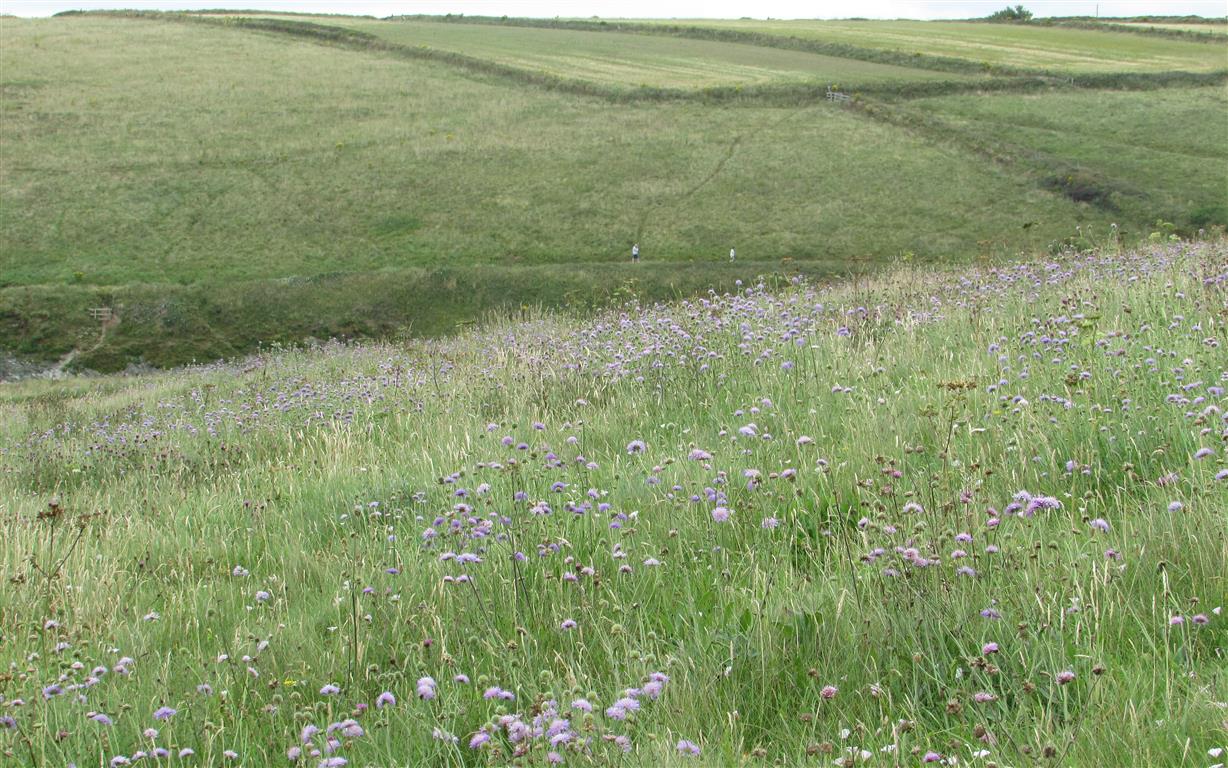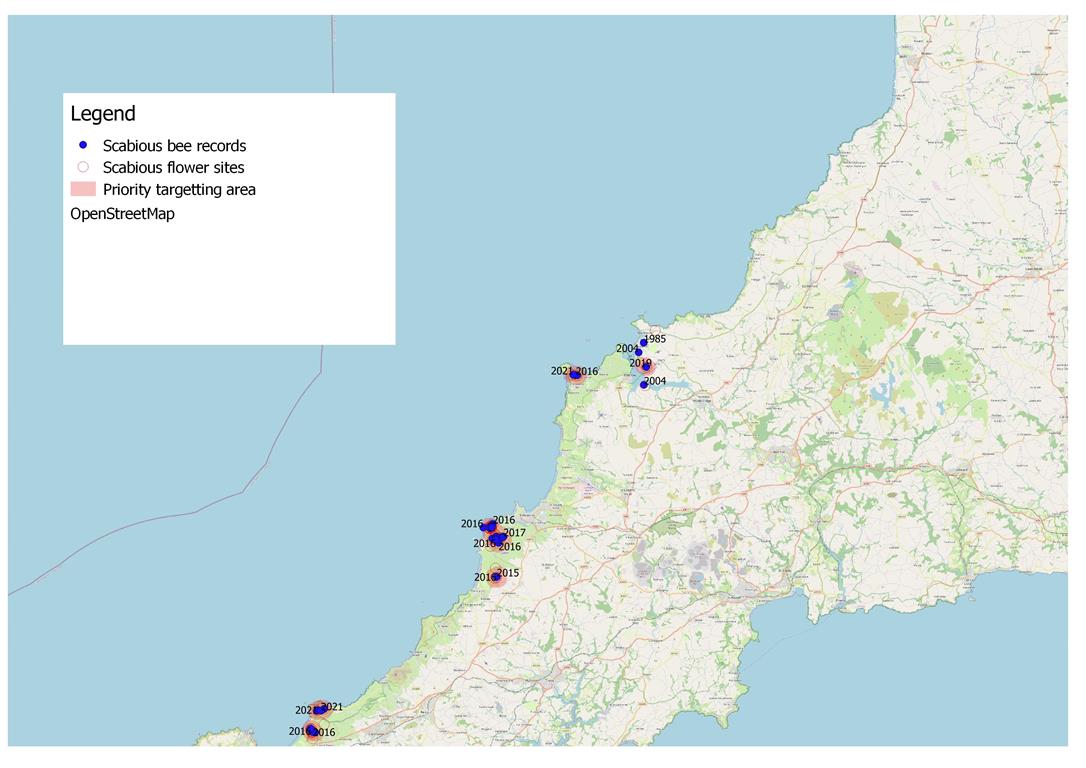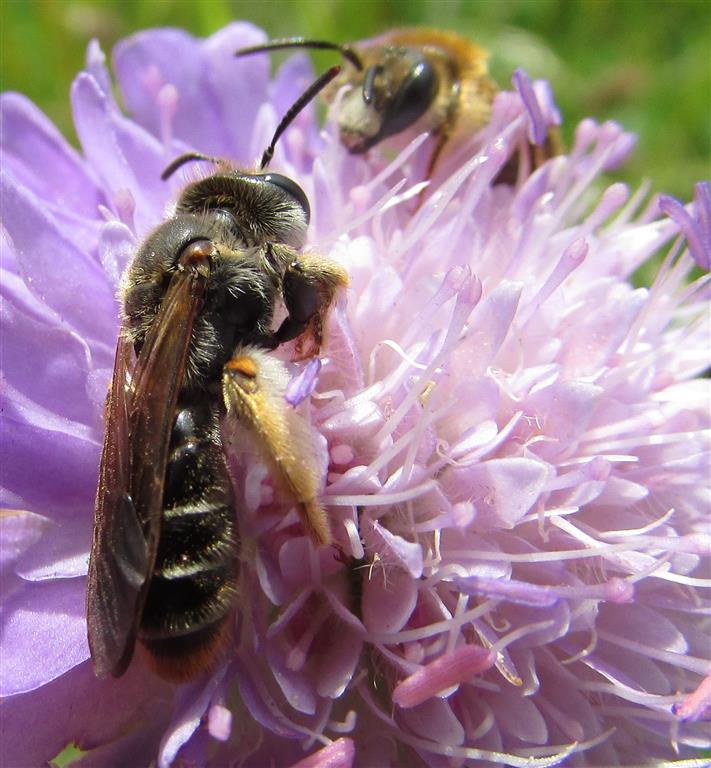

The Large Scabious Bee is a Nationally Scarce mining bee which is specialised on Field Scabious and Small Scabious pollen. I have been working with partners to help safeguard this bee in Cornwall.
The Large Scabious Bee (Andrena hattofiana) only occurs on about 7 2km squares in Cornwall. These are typically dune edge sites where Field Scabious occurs. Kelsey Head area supports a strong population of this bee but on most Cornish sites only small numbers have been recorded and many sites are either small or fragmented. Gwithian/Hayle Towans is a large dune system but the main colony is located in a small churchyard. There are only small numbers recorded outside this site and across the Towans scabious abundance is poor. It has been estimated to need 780 flowers to provide for a minimum population of 10 Large Scabious Bees. The bee is likely to have always been localized in Cornwall, although the records and accounts by E.C.M. Haes suggest some decline. The Small Scabious Bee (Andrena marginata) was also recorded in west cornwall and its cuckoo Silver-sided Nomad Bee (Nomada argentata) was recorded in east Cornwall but now both appear to be extinct as i have surveyed the historical sites. Action is needed to safeguard the species in Cornwall by boosting Field Scabious abundance.

Large Scabious Bee

Suitable abundance of scabious at one of the best sites
I am working with partners including National Trust, Buglife and Peas4bees growing and planting local provenance Field Scabious to plant on sites to better secure populations. In 2021 we found the bee on one of the new sites planted in 2020


Male and female Large Scabious Bee

The Small Scabious Bee (Andrena Marginata) another scabious specialist which formerly occurred in Cornwall